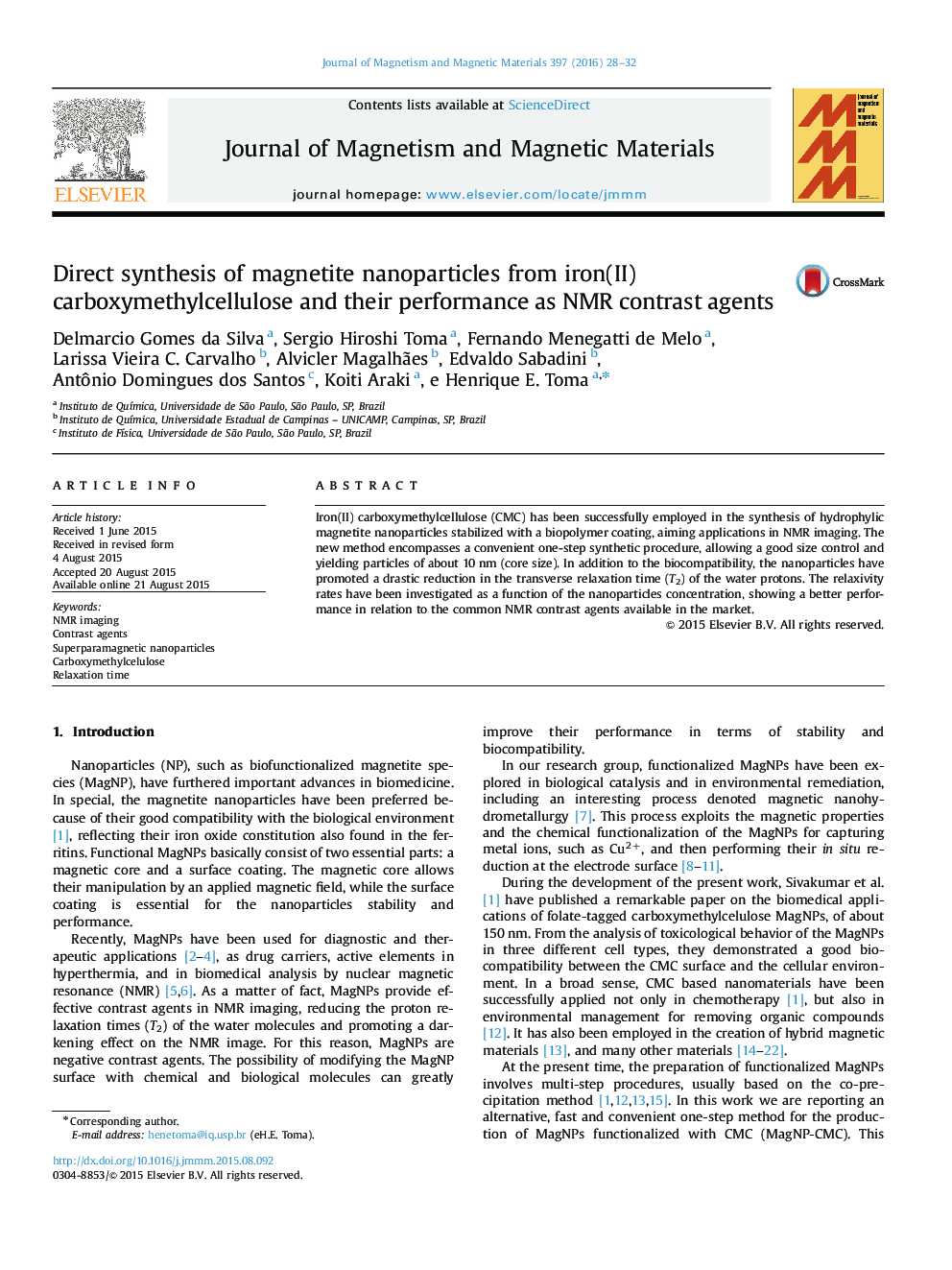| Article ID | Journal | Published Year | Pages | File Type |
|---|---|---|---|---|
| 1798743 | Journal of Magnetism and Magnetic Materials | 2016 | 5 Pages |
•Stable, hydrophylic magnetic nanoparticles have been obtained.•Direct use of iron(II) carboxymethylcellulose improves the synthesis.•The magnetic nanoparticles exhibit high spin–spin relaxivity.•The particles promote dark contrast by decreasing the T2 relaxation time.
Iron(II) carboxymethylcellulose (CMC) has been successfully employed in the synthesis of hydrophylic magnetite nanoparticles stabilized with a biopolymer coating, aiming applications in NMR imaging. The new method encompasses a convenient one-step synthetic procedure, allowing a good size control and yielding particles of about 10 nm (core size). In addition to the biocompatibility, the nanoparticles have promoted a drastic reduction in the transverse relaxation time (T2) of the water protons. The relaxivity rates have been investigated as a function of the nanoparticles concentration, showing a better performance in relation to the common NMR contrast agents available in the market.
Graphical abstractFigure optionsDownload full-size imageDownload as PowerPoint slide
